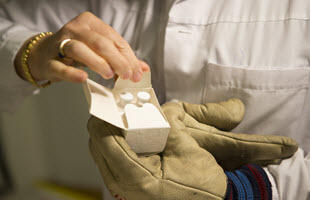The Geography of Drug Market Activities and Child Maltreatment

The story behind the development of this paper is quite interesting. I have been working with a group of researchers who are trying to determine how to model the spatial diffusion of drug markets across the state of California. The ultimate goal of such work is to predict places that are vulnerable to these drug markets and put infrastructure and programs into place that will prevent or reduce drug problems in these areas.
This got me thinking. If we can model the diffusion of these markets, can we also begin to model the effects of these markets on social problems, including child abuse and neglect? And, could this lead us to the development of innovative interventions or practices that prevent drug-related child maltreatment?
About the same time, I began working with a doctoral student (co-author Nancy Kepple) who had spent two years as a caseworker for the Los Angeles County Department of Children and Families. She was able to provide numerous examples from her work where drug use and/or abuse negatively impacted parenting. In particular, she remarked how knowing about drug activity in a neighborhood can alert a caseworker to assess for specific effects related to a child’s well-being.
Thus, this study was designed to enhance our understanding of how illicit drug markets in neighborhoods place children at risk of being abused or neglected. In particular, we make the case that different social mechanisms related drug market activities to child maltreatment. In one, drug markets increase availability of drugs resulting in increased drug use. It is that drug use that leads to problematic parenting. In the other, drug market activities are related to disorganized and disadvantaged neighborhoods. These neighborhood conditions adversely affect parenting behaviors.
These different mechanisms suggested varying spatial relationships between drug markets and child maltreatment whereby drug-using populations will be in spatial areas next to locations of drug sales (as they tend to buy drugs in one location and use them in another) but that local (i.e., same neighborhood) drug market sales indicate. Local drug possessions would suggest the presence of drug-using populations.
Of course, the decision to do the study and actually conducting the study are two different things. We faced several methodological challenges that had to be confronted in order to answer our research questions. The data on child abuse and neglect was only available to us as counts by Census tract. Looking at these relationships over these spatial units leaves us vulnerable to problems of spatial autocorrelation (or the correlations between places that are next to each other). In particular, since Census tracts are administrative units that do not always account for the spatial features of neighborhoods, controlling for this form of systematic error is important. Compounding this is the fact that we were also looking at this relationship over time and had to also control of temporal autocorrelation. This meant we had to look outside traditional analytic techniques and settled upon using Bayesian procedures (specifically hierarchical space-time analyses) that allowed us to control for and assess both these types of autocorrelation.
In the end, what we found was partial support for some of our hypotheses. Drug possessions were related to higher rates of entry into foster care in the same area. Entry to foster care occurs when children have been removed from their home and placed with another family due to abuse or neglect. The relationship between drug sales and child maltreatment outcomes supports both the availability and neighborhood disorder hypotheses. For the drug use social mechanism, we found that drug sales that occurred last year in adjacent neighborhoods had more referrals for investigations of child abuse and neglect in the current neighborhood for the current year and drug sales in adjacent neighborhoods were related to higher rates of entry into foster care for the same year. In support of the neighborhood conditions mechanism, we found past year local drug sales were related to higher referrals nvestigations and current year local drug sales related to higher rates of substantiated cases of maltreatment.
Clearly, the relationship between drug markets and child abuse is complicated. And, there is certainly much more research that needs to be done in this area. Are the problems related to abusive or neglectful parenting really an indication of drug use and not of drug markets at all? If some child maltreatment is truly a function of drug market activities, can we predict the spread of these markets and develop programs that both inoculate neighborhood areas against the development of these markets or the development of related problems, like child maltreatment or violence?
Read Related Articles
Methamphetamine Markets, Personal Relationships, and Families
Sonia Livingstone on Children and the Internet
Rejoinder to Gary Guttings Doubts about the Behavioral Sciences






















































































